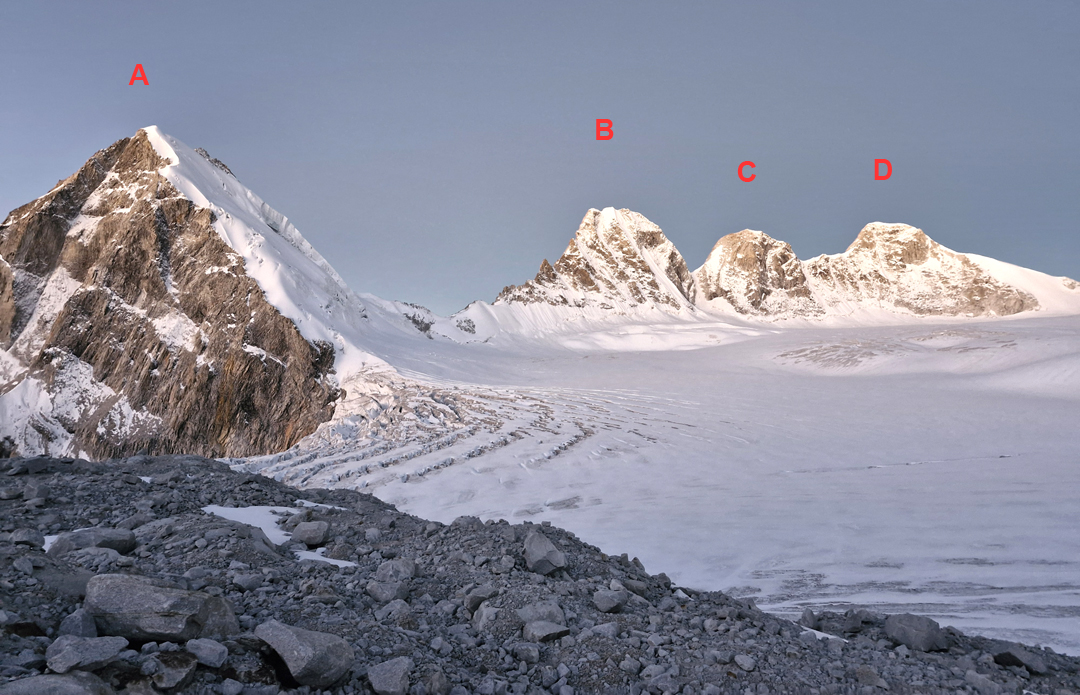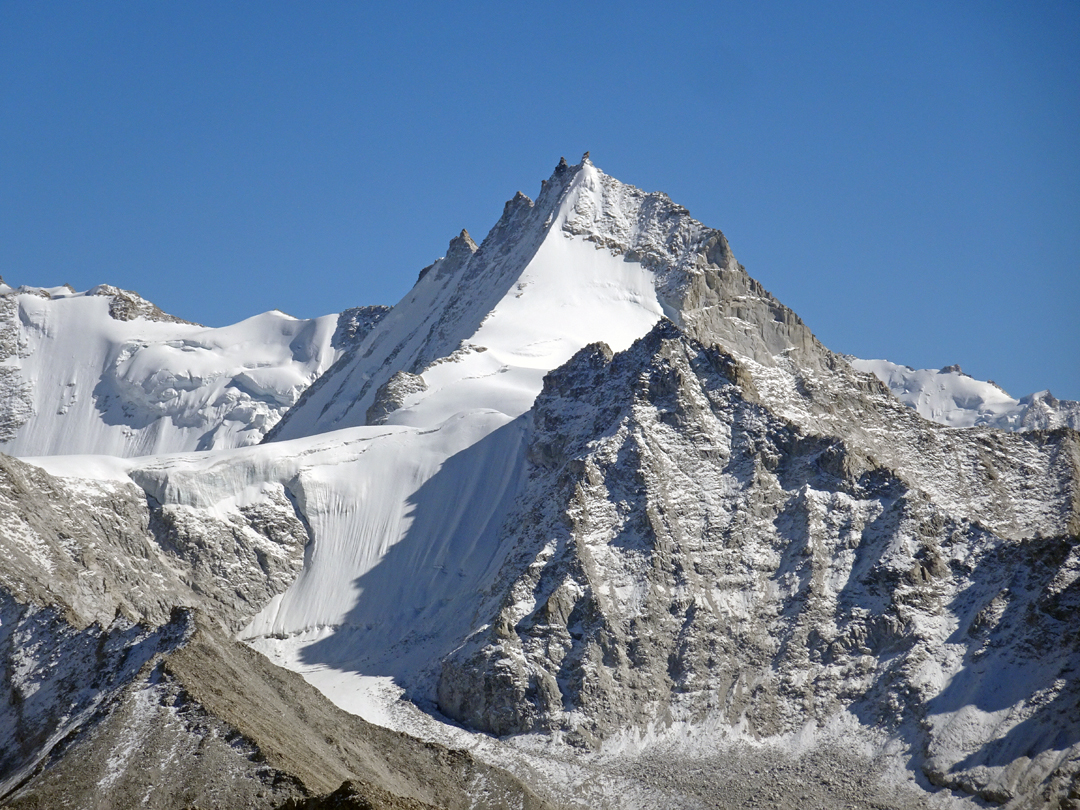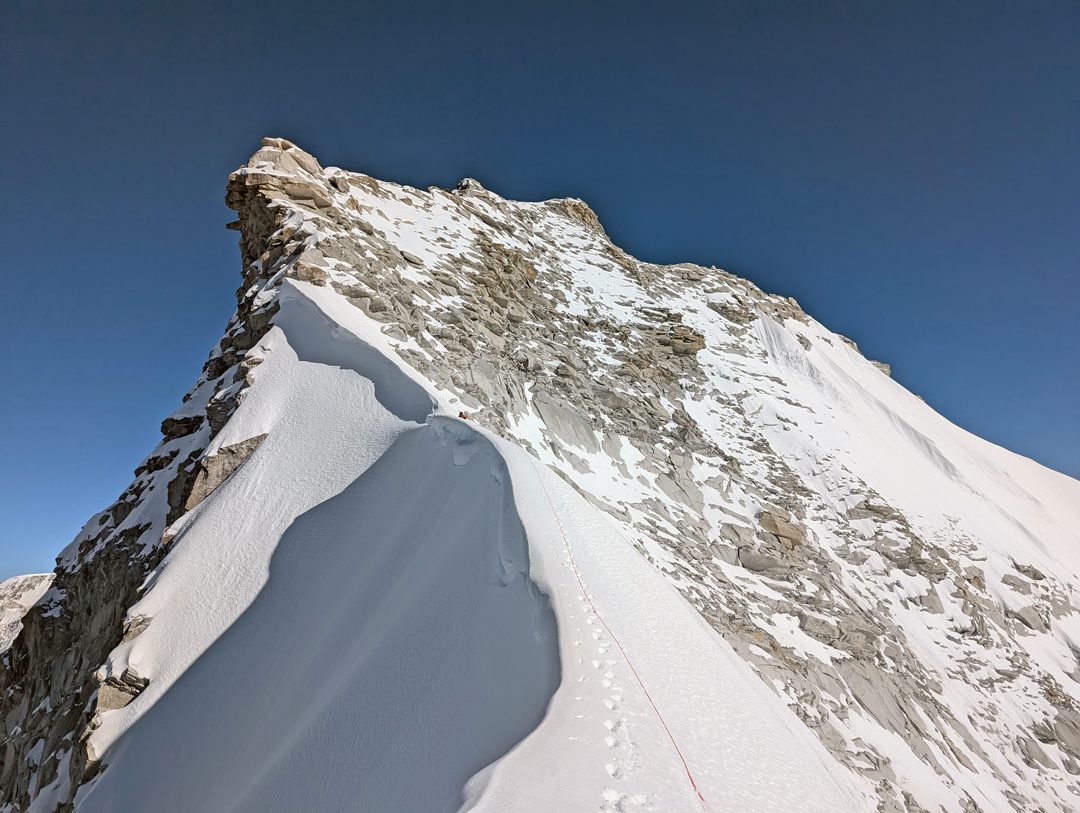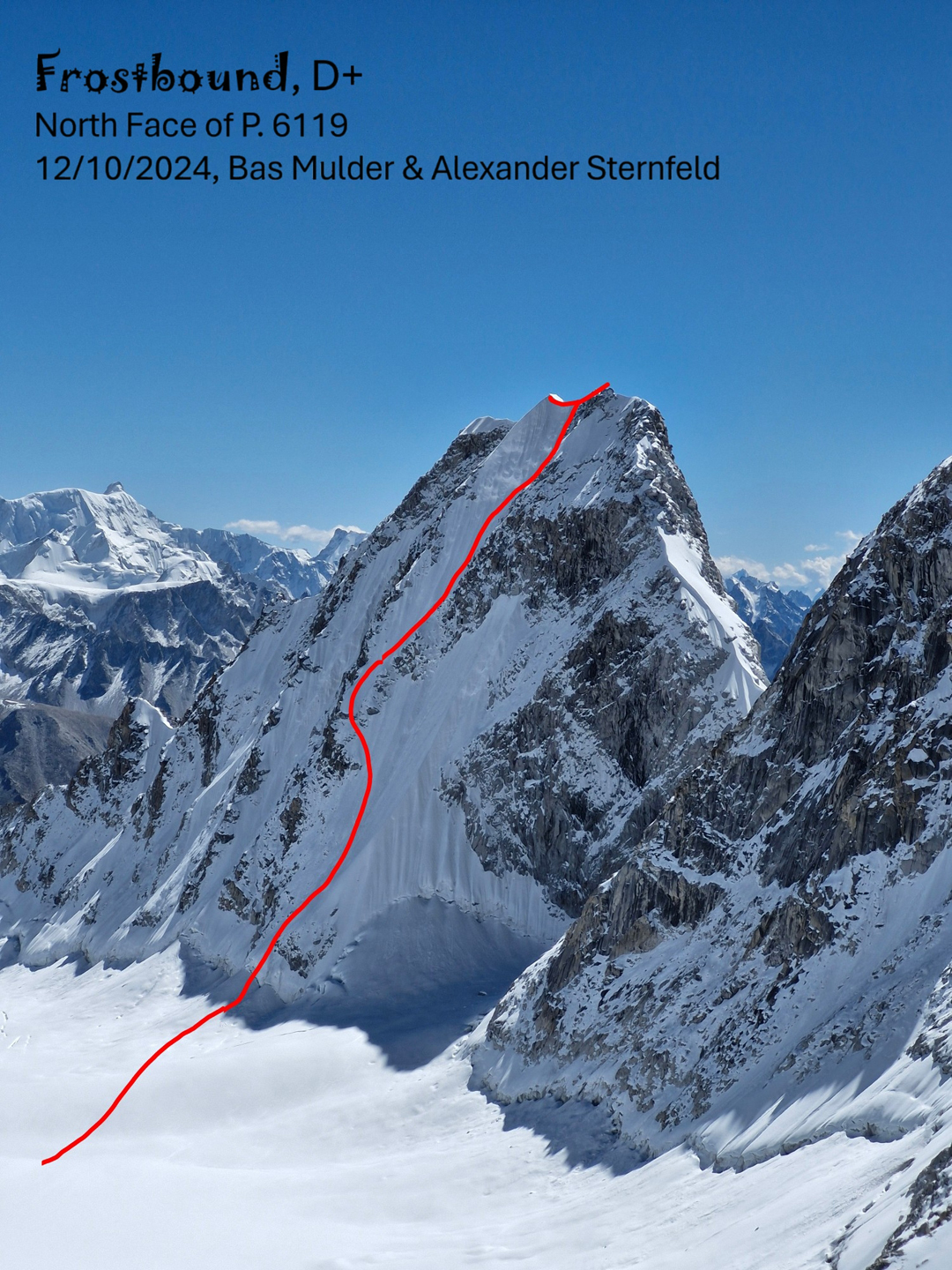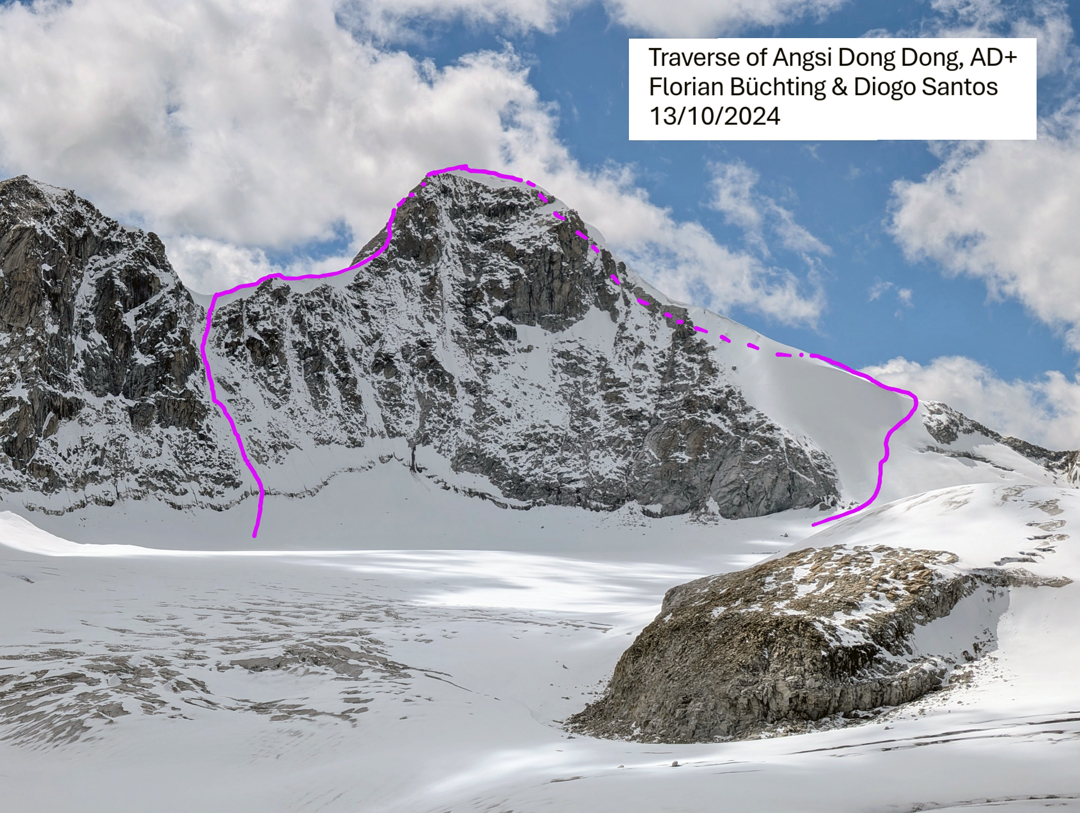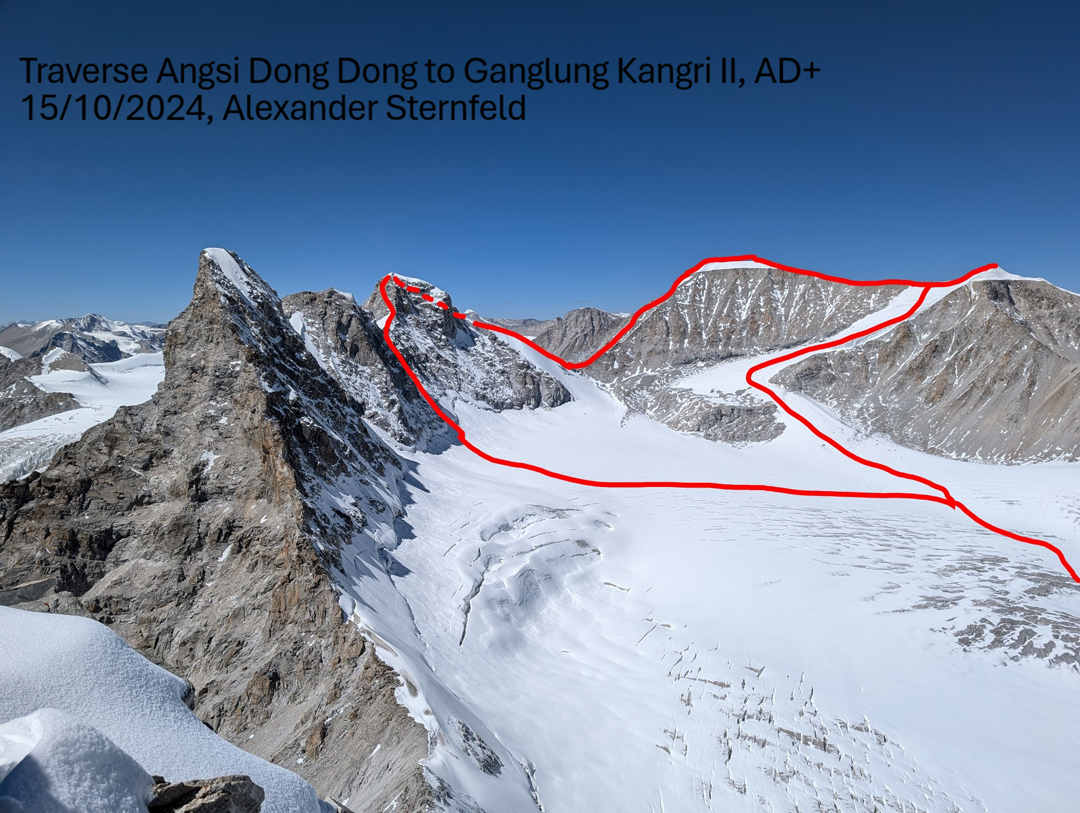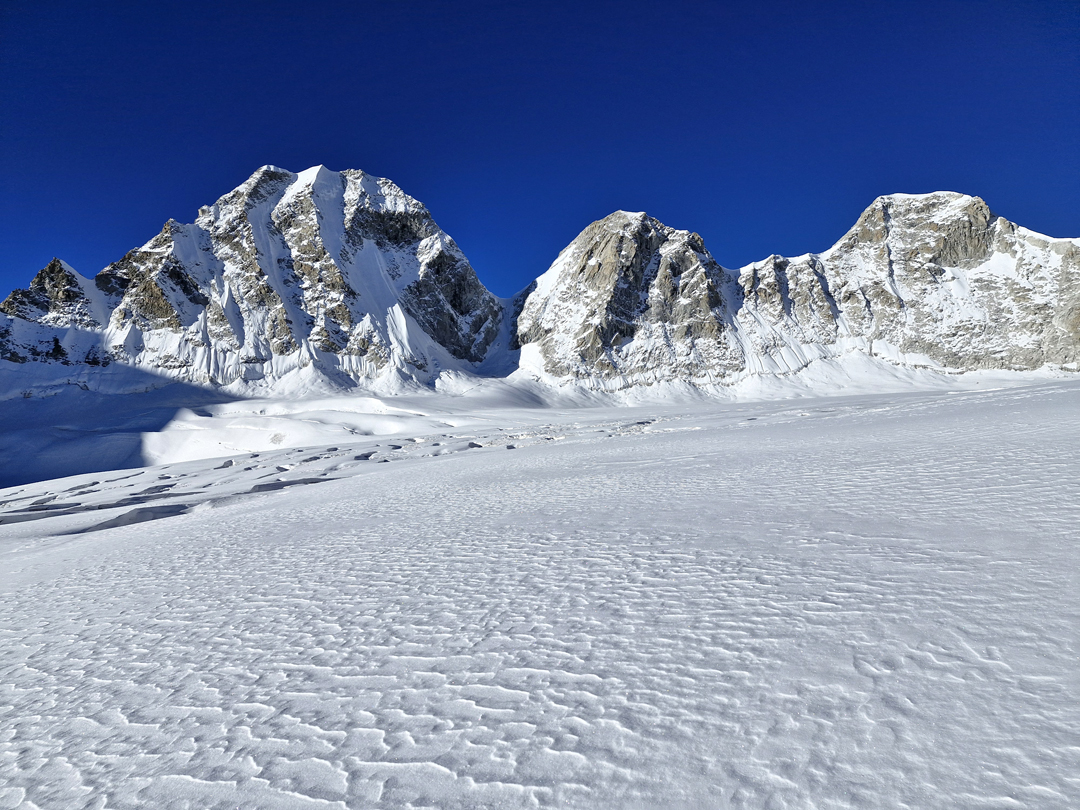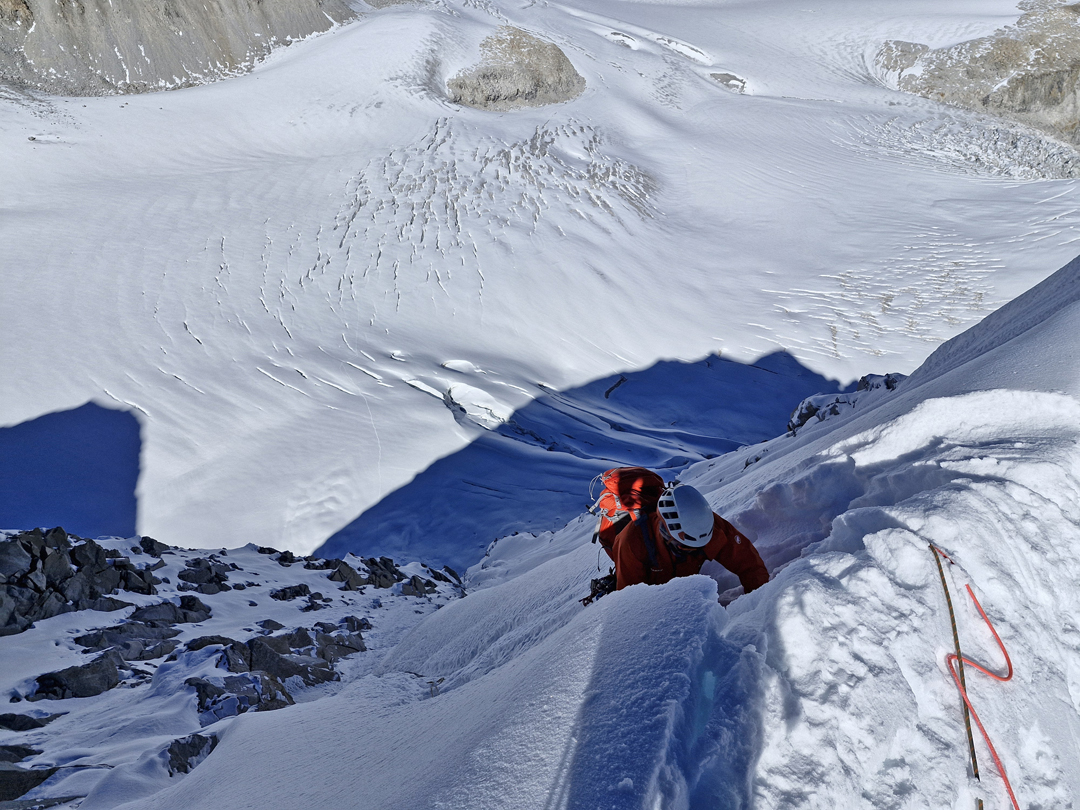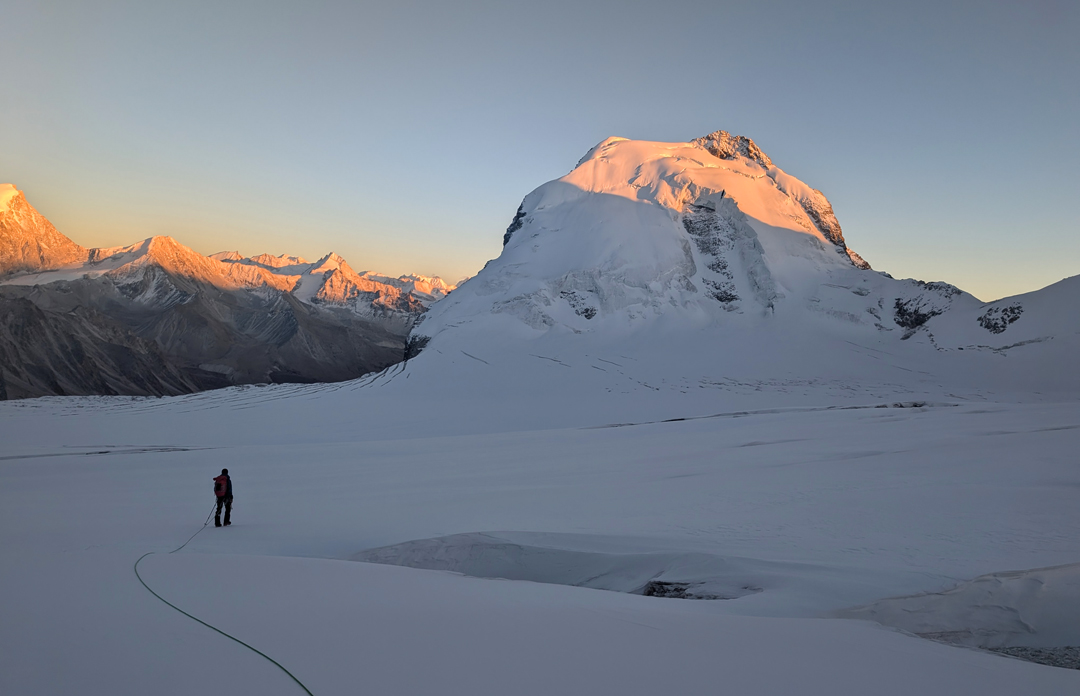Angsi Glacier Basin, Four First Ascents
Nepal, Chandi Himal
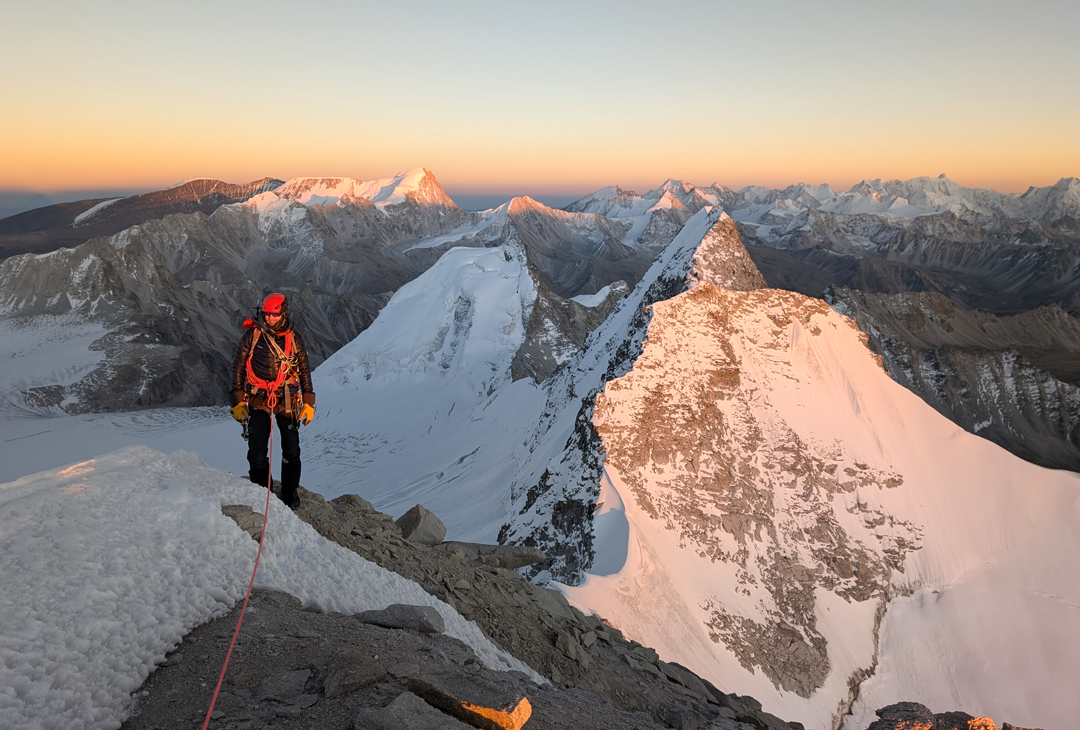
The Angsi Glacier basin lies in the northeastern part of the Chandi Himal on the border with Tibet. It was first reached by a British expedition in 2019, then again in 2023 by more British climbers, who made the first ascent of Ganglung Kangri II (AAJ 2024). Although the basin could be accessed quickly from the Tibetan side, this is politically impossible at present and a long trek in West Nepal is needed to reach it from the south.
After a flight to Simikot, Florian Büchting, Bas Mulder, Diogo Santos, and I trekked up the Chuwa Khola for six days to a base camp at 5,050m (30.321393°N, 82.087713°E), east of the Angsi Glacier, arriving on September 30. We knew from the 2023 trip report that there was an easy passage to the Angsi Glacier basin over the col between Peaks 5,936m and 6,254m. We also think it might be possible to access the basin directly from the lower valley farther to the west, but we did not explore this.
We established a camp in the basin, then on October 7 made the first ascent of Peak 6,013m (30°19’20.46”N, 82°2’13.53”E). It proved to be good acclimatization for the team, and we reached the top relatively easily (AD-) via the north ridge. Both the cold and altitude posed problems, giving us a good sense of the climbing conditions we should expect.
Back at our camp in the basin, we found that one of the tents had been flipped upside down by the wind. Two sleeping pads were lost, and one tent pole had broken. Bas and I decided to return to base camp, but Florian and Diogo stayed, and the next day made the first ascent of Ganglung Kangri I (6,256m, 30°20’33.43”N, 82°0’42.25”E) by the south ridge (AD). The granite on the lower ridge was high quality, but in the upper section it became loose and brittle. From the summit they traversed east to Ganglung Kangri II (6,182m), completing the second ascent, and descended by the British route to the south.
After returning to the basin with a repaired tent, on the 12th, Bas and I climbed the north face of Peak 6,119m. It proved challenging due to powder snow and a general lack of ice, making good protection scarce. It was also bitterly cold, despite little wind. We descended the face by rappelling and downclimbing, naming our route Frostbound (D+). Bas suffered frostbite on one of his pinky fingers, and after a large blister formed, we decided to evacuate him by helicopter to Pokhara. There, it was confirmed he wouldn’t lose the finger; he was moved to Kathmandu for further treatment.
On the 13th, Diogo and Florian climbed Angsi Dong Dong (6,171m) via the southeast ridge (AD+) and then traversed the mountain by descending the north ridge. They accessed the southeast ridge by a beautiful northeast-facing couloir and reached the summit at sunset. On the 15th, using the existing tracks on Angsi Dong Dong and Ganglung Kangri, I made a solo traverse of the two, following the frontier ridge and finishing with an ascent of Ganglung Kangri II. During this AD+ traverse, I had great views of Kailash and the steep north face of Ganglung Kangri I.
For our final climb, Florian and I attempted the attractive northwest side of Peak 6,222m (30°16’20.60”N, 82°6’58.55”E), a border peak south-southeast of base camp in the Changla Himal. Unfortunately, Florian contracted a sinus infection, and after an uncomfortable night beneath the face, he decided to go back. I continued alone but was stopped by a challenging bergschrund.
The next day, we began our return journey to Simikot. The weather during our stay had been generally good, with only two days of precipitation; the main difficulty had been the wind, which on some days reached 70 kph at 6,000m.
—Alexander Sternfeld, The Netherlands


